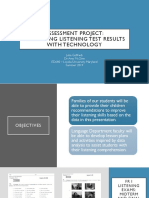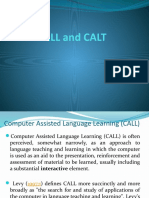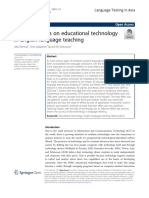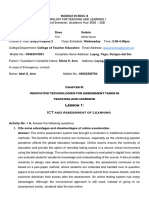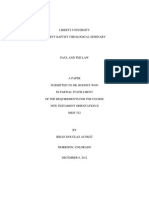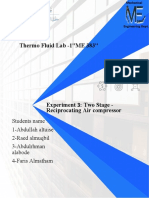0% found this document useful (0 votes)
19 views5 pagesTopic 24 Technology in Language Testing
The document discusses the integration of technology in language testing, highlighting its benefits such as adaptive testing, immediate feedback, and increased accessibility. It outlines the importance of technology in creating authentic assessments and managing large-scale testing while also addressing potential challenges like technical issues and security concerns. The conclusion emphasizes the need for collaboration among educators and policymakers to ensure that technological advancements in language assessment uphold equity and validity.
Uploaded by
judeejamesperez2014Copyright
© © All Rights Reserved
We take content rights seriously. If you suspect this is your content, claim it here.
Available Formats
Download as PDF, TXT or read online on Scribd
0% found this document useful (0 votes)
19 views5 pagesTopic 24 Technology in Language Testing
The document discusses the integration of technology in language testing, highlighting its benefits such as adaptive testing, immediate feedback, and increased accessibility. It outlines the importance of technology in creating authentic assessments and managing large-scale testing while also addressing potential challenges like technical issues and security concerns. The conclusion emphasizes the need for collaboration among educators and policymakers to ensure that technological advancements in language assessment uphold equity and validity.
Uploaded by
judeejamesperez2014Copyright
© © All Rights Reserved
We take content rights seriously. If you suspect this is your content, claim it here.
Available Formats
Download as PDF, TXT or read online on Scribd
/ 5


















